Islamic Heritage of Architectural Brilliance in India
The architectural creations of the Islamic heritage vividly illustrate some of the best traditions of the diversity existing in the cultural and artistic values set out in Muslim societies around the world. From the grandiose Andalusian mosques to the latticed-patterned palaces of the Ottoman Empire and attracting mausoleums made under the Mughals, covering different historical time periods and geographical regions, the list goes on. Joining in the architectural heritage diverse influences from Arab, Persian, Byzantine, and Indian cultures, it represents remarkable work, care for the detail, and profound religious symbolism. This paper intends to study the unique feature and historical world of the global Islamic architecture, particularly with reference to their colossal contribution in the architectural heritage of the world.
This turning point was offered by none other than the Indian Islamic architecture. Taj Mahal is a great masterpiece of Agra that symbolizes graceful beauty and attentive artistry that Mughal architecture holds within it. It represents the perfect fusion of Persian, Indian, and Islamic architectonic style and thus reflects architectural perfection. Other architectural wonders that exhibit Islamic architectural beauty marked by grandeur, intricacy in detailing, and balanced proportion are the Red Fort and Jama Masjid at Delhi. These stupefying structures have contributed not only to the grandeur of India's cultural heritage but also much to make the world recognize and appreciate the architectural splendor of Islam. Indian Islamic architecture seems to be the perfect example of a rich cultural tapestry coupled with architectural creativity. A perfect example could be seen through a combination of Persian, Indian, and Islamic influences, creating structures that truly stood out and became iconic, inspiring the world over.
The Taj Mahal: Sure, the Taj Mahal is a masterpiece of Mughal and Indian Islamic architectural art. Founded in the 17th century by Emperor Shah Jahan, it is really full of breathtaking and highly delicate white marble beauty. Its design was done in reference to many other Persian architectural features, including the use of domes and minarets. Some of the artistic methods by which the Taj Mahal is designed include careful planning for symmetrical layout and preparation of plan and elevation with beautiful carvings, inlaid with gemstones, and fine marble screens (jalis). This did very great reflection on the construction intelligence involved to bring out such minute architectural details involved for the execution of this monumental project.
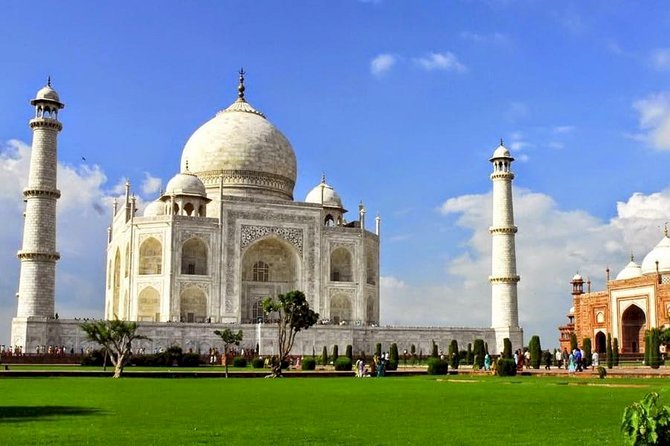
Figure 1: Taj Mahal , Agra
The Red Fort at Delhi, the prime residence built by Emperor Shah Jahan for the Mughal emperors, it glorifies greatness in Mughal architecture and the timeless influence it has afforded world architectural growth. Partly due to the architectural elements found integrated from Persia, India, and Islam, it epitomizes the imperial pretensions of the Mughal emperors: massive walls of red sandstone, white marble pavilions, carvings in marble, and gardens laid out with great detail, like Diwan-i-Am and Diwan-i-Khas, both being sleek and beautiful. History and heritage: Its architectural heritage spans history to influence modern philosophies with references to spatial organization, effective use, and sustainability of the balanced environment that contributes to shaping contemporary thought in urban planning and design. Symbolic of power, through the artistic adornments that are a blend of creative fusion, continues to inspire architects and designers in the direction of this illuminant of architectural brilliance in the preservation of Mughal heritage and thereby epitomizing the lasting effect of Islamic architectural principles on the world stage as one of the milestones in architectural evolution and discourses.
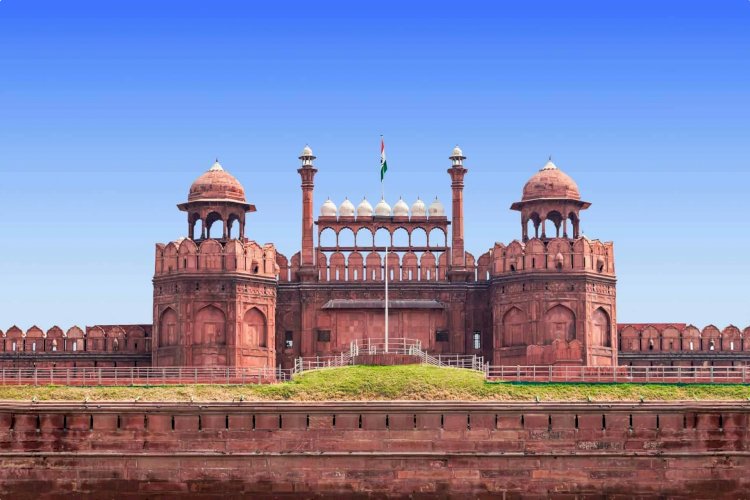
Figure 2: Red Fort, Delhi
The Jama Masjid: The towering glory of Jama Masjid in Delhi, commissioned by Emperor Shah Jahan, stands as a monumental testament to the genius of Islamic architectural marvel and the transforming effect that it has cast on modern streams of architectural expressions. It's an architectural marvel built in the years 1644-1656 AD, displaying the fusion of Persian and Indian architectural styles with floral designs and Quranic inscriptions done in a blend of red sandstone and white marble. In other words, the desire to build not just an structure that served the functions of the institution of religion but further inspired the grandeur and beauty synonymous with Islamic architecture fuelled building the Jama Masjid. It has inspired many contemporary architects with its constant focus on symmetry, geometric patterns, and highly complex ornamentation to mine from new design vocabularies that fuse the essence of tradition with cutting-edge innovation. The use of durable materials, such as red sandstone and white marble, manifests lifespan and sustainability architectural choices, getting them inducted into the discussion of sustainable building practices and heritage conservation. Furthermore, this has factored the role of Jama Masjid as a cultural and religious site into urban development strategies wherein their influence could be visible from the architectural fabric of the surrounding, thereby, dynamics of the community. Its life-transforming impact over the modern developmental phase of modern architecture highlights the perennial relevance and adaptiveness of Islamic design principles to shape global architectural discussion and inspire generations of architects and designers.

Figure 3: Jama Masjid ,Delhi
The Fatehpur Sikri: Situated near Agra, it stands as a world-class example of Mughal architecture and exemplifies the changing influence of Islamic architecture on modern development. This had been constructed at the turn of the 16th century by Emperor Akbar. It exhibited a mix of Persian, India, and Islamic elements. Persian, Mughal strongholds, and palaces prominently displayed red sandstone as a significant building material, exhibiting the strength and beauty of this Mughal. The innovation in architecture in the complex, for example, the enormous courtyard and detailed carved pillars in the Jama Masjid, have profound influence modern design paradigms that lay emphasis on geometric patterns, intricate carvings, and proportionality. The open spaces, water features, and natural elements of the place reflect holistic approaches echoed in contemporary urban planning. Fatehpur Sikri's site, being a UNESCO-designated site, becomes a model for sustainable conservation, bringing global attention towards Fatehpur Sikri in relation to architectural heritage and towards Islamic architecture that has been of immense influence on modern discourse and architectural practice.

Figure 4: Fatephur Sikri , Uttar pradesh
The Humayun's Tomb: 16th-century tomb of Humayun in Delhi, which largely marked the form of Islamic architecture preceding the Taj Mahal and the greatest peak of Mughal artistic achievement. To its architecture, a real mix of Persian and Indian architectural elements, with a symmetrical plan and central dome, charbagh (Mughal) garden, and water channels typical of Persian garden design. Due to the presence of cross-cultural influences, Persian gardens are known for a mix of Indian and Persian (Islamic) designs. The architecture was inspired by the architecture of the grand mausoleum and the construction of the grand mausoleum for Emperor Humayun, signifying the elegance and sophistication that represents Mughal Architectural Aesthetics. Some of the outstanding developments at the site of Humayun's tomb were detailed red sandstone, white marble, and finely cut stone, ornate lattice work, application of a geometric pattern, and detailed works together in the site. It was giving a brilliant and splendid look to the same. The monument testifies to the design approaches bordering at the contemporary edge of the time. It shows how Islamic architecture brilliantly bound the local traditions in producing enduring, captivating creations that to this day continue to act as an inspiration for modern development in the field of architecture.
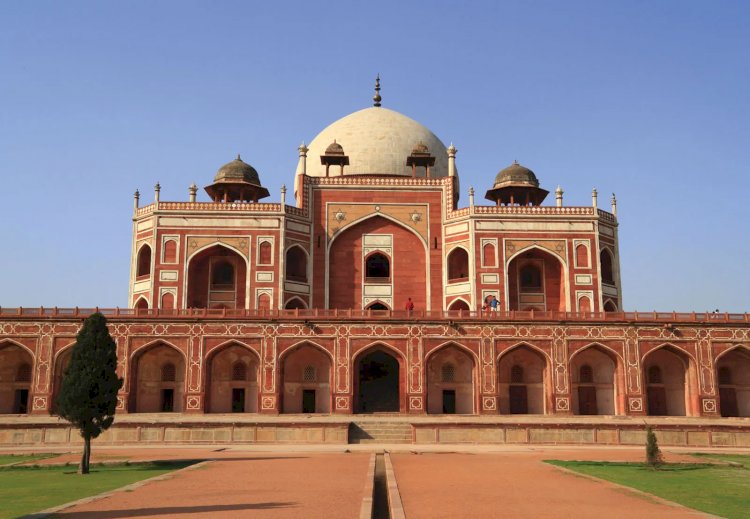
Figure 5: Hamyun’s Tomb, Delhi
The Mughal Gardens besides the unique structure type formed during the time of Mughal architecture, we should also state his famous gardens that are a brilliant example of Islamic designing principles and really influenced many modern tendencies in buildings. The layout of the Mughal gardens, with quadrilateral patterns of the fountains of the water channels, and the central fountains, is totally different, and one can see the reflection of an Islamic paradise on earth. The intention of the garden was to devise harmonious, peaceful areas in which the fullness of nature and water in full symmetry would combine and produce a living picture full of Islamic aesthetics. Some of the remarkable altitudes of the Mughal Gardens will be found in world-renowned specimens from Shalimar Bagh in Kashmir, Nishat Bagh in Srinagar, Mehtab Bagh in Agra, where they combined the natural outline of the landscape with structural elements to produce a most beautifully interesting effect. But the gardens constitute not merely a masterpiece of Mughal design; they inspire present architects and urbanists in the search for a harmonic relationship of built environments to the natural environment. They emphasize the fact that Islamic architectural principles have a very durable effect on modern paradigms of development.

Figure 5: Mughal Garden, Srinagar
The Qutub Minar Standing as a example of the rich heritage of India, the soaring monument is Qutub Minar. The height of this historic minaret is 73 meters (240 feet), which is being considered a UNESCO World Heritage site for its impressiveness and significance.Qutub Minar was built around the early 13th century and is grandly adorned with delicate models, verses of the Holy Quran, and obtrusive geometric designs that bring to focus the great artistic flair of the times. The minar, begun by Qutb-ud-din Aibak and completed by Iltutmish, communicates mainly traditional Islamic design with the Indian five-stage architectural element to give a complete picture of the development of architectural styles over the years.However, more than its imposing physical, Qutub Minar shows more of multi-dimensional cultural heritage richness, including the artistic fusion more commonly seen in India. Its status as the site of UNESCO World Heritage points to its worldwide significance in luring visitors and researchers in history and architecture from all across the world. It is in itself a gesture form towards the wonders of former ancient India and forms an indispensable place for whoever is attracted towards pages of history and architectural magnificence.
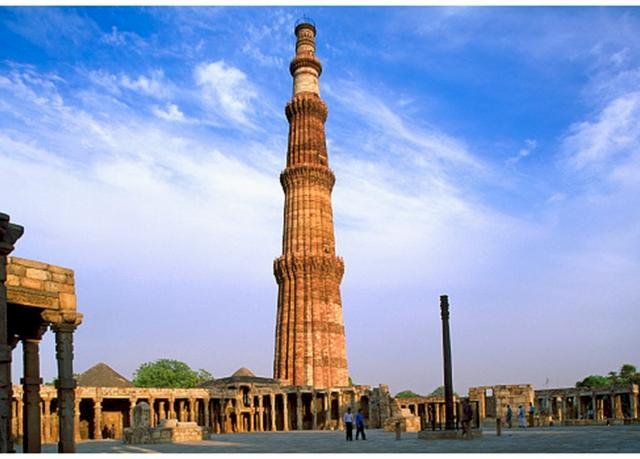
Figure 6: Qutub Minar, Delhi
The Islamic architectural heritage is one of huge variety and rich diversity, from Andalusia to India, with wonderful artistic creativity combined with cultural collecting and lasting importance. This mosaic of architectural excellence is proof of cross-cultural interaction and creative synthesis that has been characteristic of Islamic civilization through history. The grandiose mosques of Andalus, with complex geometric patterns and fine arches, reflected the high cultural zenith of Islamic artistic attainment in Spain of the Middle Ages. So do the most celebrated buildings of Mughal India, such as the Taj Mahal and the Red Fort, epitomize that synthesis of Persian, Indian, and Islamic features known for great work and deep symbolism.
These architectural marvels, some "premodern," others "brutalist," have a timeless appeal and cultural abundance that plays a role in the ongoing conversation within the globe of architecture, and they well up as a spring of inspiration for posterity. All these traditions combine in this dynamic development of Islamic architecture over a millennium, besides the influences of Arabs, Persians, and native styles. Beyond aesthetic considerations, the huge impact of Islamic architectural principles ranges from practices in city planning, urban design, arrangement of space, to even sustainable design methodologies around the world.
The lasting legacy of Islamic architecture, finally, lies with great emphasis on how it shaped the physical environment and even allowed an exchange of cultures that had a lasting effect on the discourse of architecture. This heritage, in turn, becomes an inspiring source for architects and designers to enrich the still ongoing narrative of innovation in the architecture and the cultural dialogue of the explored wealth of principles of design in contemporary contexts.
About the author: Kadeejath Shamila is currently pursuing Masters in Architecture at International Islamic university of Malaysia (IIUM)
Disclaimer
The views expressed in this article are the author’s own and do not necessarily mirror Islamonweb’s editorial stance.

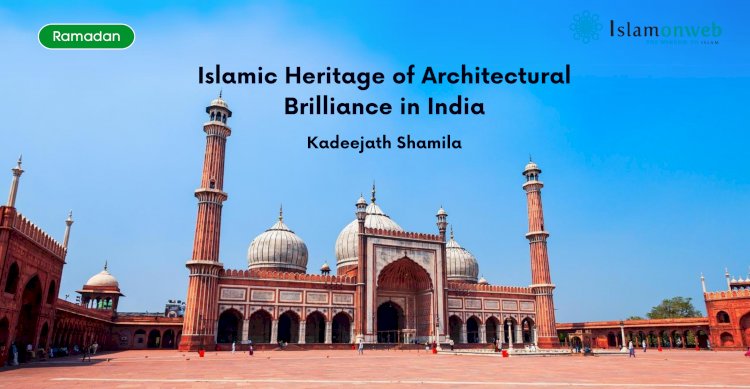






















Leave A Comment